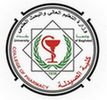The College of Pharmacy discussed the PhD dissertation entitled “Preparation, Characterization, In-Vitro and In-Vivo Study of Vincristine Sulfate Loaded Albumin Nanoparticles” by the student Hamid Jabbar Hasan and the supervisor, Prof. Dr. Mowafaq Mohammed Ghareeb, at the Pharmaceutics Department. The study aimed to prepare and characterize bovine serum albumin-based nanoparticles as a delivery system for vincristine sulfate in cancer treatment. The study included the utilization of the desolvation method for the preparation of vincristine sulfate-loaded bovine serum albumin nanoparticles. To select the appropriate organic solvent as an antisolvent agent, five blank formulas were prepared (starting with 100 mg bovine serum albumin and 480 µg glutathione) using different organic solvents, which include acetone, ethanol, methanol, acetonitrile, and dimethyl sulfoxide. Glutathione was used as a cross-linker. These formulas were evaluated for particle size, polydispersity index, zeta potential, and other characteristics, including sodium dodecyl sulfate-polyacrylamide gel electrophoresis, size-exclusion liquid chromatography, human blood compatibility, and cytotoxicity study using MDA-MB-231 breast cancer cells. Nine final formulas were prepared (starting with 100 mg of bovine serum albumin, 5 mg of vincristine sulfate, and one of three types of cross-linkers: glutathione, 1-ethyl-3-3-dimethylaminopropyl carbodiimide hydrochloride, or glutaraldehyde) with varying concentrations to obtain the optimum formulations. These formulations were investigated for particle size, polydispersity index, entrapment efficiency, and zeta potential. The optimum formulations were then investigated for in vitro drug release. Based on the in vitro drug release data and other characteristics, the best formulation was selected. The chosen nanoparticle formulation underwent further characterization, including transmission electron microscopy and in vitro cytotoxicity studies using MCF-7 breast cancer cells and HDFn primary dermal fibroblast normal cells. Finally, the formulation was administered to rats via intravenous injection for histopathological studies. The results showed that acetone was the most appropriate desolvating agent for the preparation of bovine serum albumin nanoparticles. The type of cross-linker was found to be the most significant variable influencing particle size, polydispersity index, zeta potential, entrapment efficiency, and in vitro release profile. The concentrations of glutathione and 1-ethyl-3-3-dimethylaminopropyl carbodiimide hydrochloride significantly impacted particle size and polydispersity index, while zeta potential was most affected by glutathione concentration. The entrapment efficiency was notably influenced by the concentration of all cross-linkers used.Formula F5 (composed of 64 mg bovine serum albumin and 2.9 mg vincristine sulfate) showed superior results in terms of particle size (162.70 nm), polydispersity index (0.158), zeta potential (-21.97 mV), entrapment efficiency (58%), and the in vitro release data (72% in 24 hours) in acetate buffer at pH 5.5. This formula was selected as the best. Transmission electron microscopy confirmed the spherical morphology of nanoparticles. The nanoparticles exhibited enhanced anticancer activity against MCF-7 cells compared to the free drug after 48 hours. No significant histopathological changes were observed in the organs (liver, kidney, brain, and lung) of rats following administration of the F5 formulation, indicating the biosafety of this formulation. The study concluded that the intravenous administration of vincristine sulfate-loaded bovine serum albumin nanoparticles presents a promising new approach for improving the targeting and delivery of vincristine sulfate in cancer treatment. The study recommended further evaluation of the optimized formula to assess its ability to inhibit tumor growth in vivo. It also suggested conducting clinical studies to adjust the dosage, performing immunological studies on the nanoparticles to evaluate their safety prior to human trials, and undertaking long-term stability studies to estimate the expiration date.



